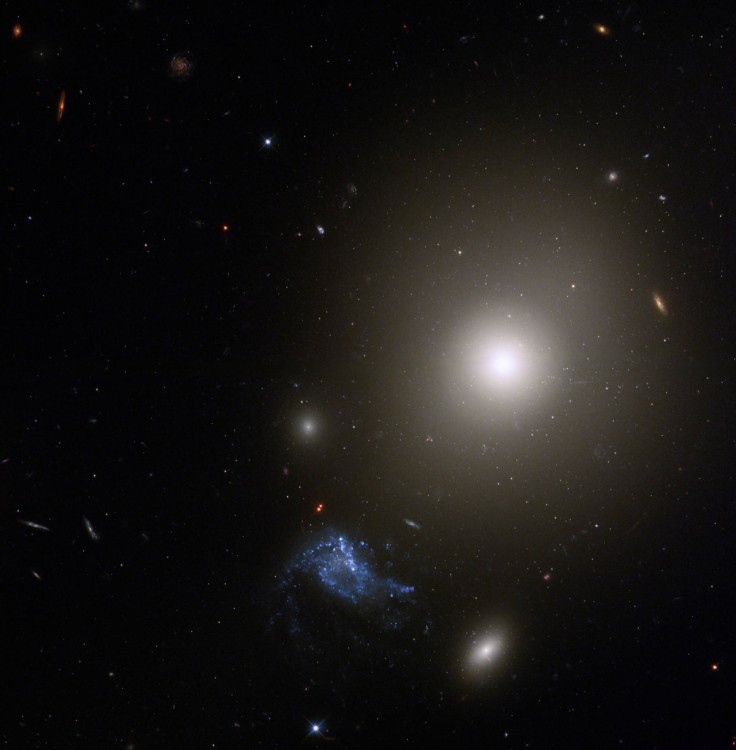
Stars are celestial bodies mostly born of hydrogen and helium. They start from an accumulation of gas and dust that collapses due to gravity, creating the makings of a star, per NASA.
One of the prime examples of places where gases and dust accumulate in space is the irregular dwarf galaxy, Minkowski's Object. If you wish to see this galactic star nursery, you're in luck.
NASA recently revealed a picture of Minkowski's Object as well as an elliptical galaxy, NGC 541, which has significantly influenced the dwarf galaxy during the formation of the stars it contains, per a separate NASA report.
Minkowski's Object is named after German-American astronomoer Rudolph Minkowski, who identified and interpreted cosmic radio sources, per Physics Today.
Minkowski's Object and NGC 541 - Celestial Parents
Minkowski's Object and NGC 541 could be considered the parents of the stars within the former. According to NASA's report, NGC 541 shoots out radio jets from its accretion disk, which is around the galaxy's central black hole.
This radio galaxy activity may be due to NGC 541's environment, which is made up of gaseous halos and/or debris from recent galaxy merging events which may have triggered NGC 541's radio galaxy activity.
NASA believes NGC 541 itself is the product of the merging of two separate galaxies, per Space.com.
NGC 541's radio jet may have caused the formation of stars within Minkowski's Object as it helps compress and heat the gas around the elliptical galaxy, causing it to heat up and become energized.
As the energized gas begins to return to a lower-energy state, the energy from the radio jet leaves the cloud in the form of radiation. During this time, the gaseous clouds cool and collapse, giving birth to stars.
Thanks to NGC 541's radio jet, Minkowski's Object has accumulated 20 million stars during its 7.5 million-year life so far.
To Study The Birth Of Stars And Galaxies
NASA reportedly wants to study and understand how galaxies and stars form, which is one of the most prominent reasons the space agency wants to study the area where NGC 541 and Monkowski's Object are.
Both Hubble and its successor, the James Webb Space Telescope once its commissioning process is complete, will be used to study this area to further study the birth of stars and the formation of galaxies through the merging of two or more separate ones.
Webb is currently expected to finish its commissioning process at the end of June, with NASA revealing its first full-color photos and stenoscopic data on July 12, a week and five days after its expected commissioning.
Webb will also be used to study celestial bodies that can give clues as to what the universe looks like in its early days and other worlds, such as the super-Earths it would be studying, 55 Cancri e and LHS 3844 b.








